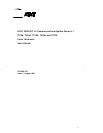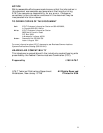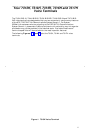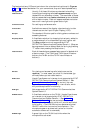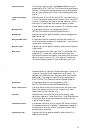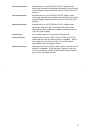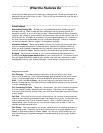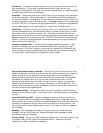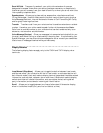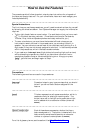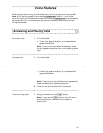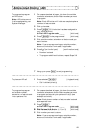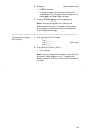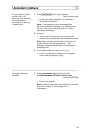
Conference Allows you to add parties to a call, so that you can conduct up to a 6-
way conversation. (If you wish to conference more than 6 parties, call your
attendant for assistance.) Use to set up time-saving conferences, or to spontaneously
include a party important to a discussion.
Drop/Stop Disconnects from a call without requiring you to hang up the handset or
press the switchhook. Can also be used with the Conference feature to disconnect
the last party added. Use whenever you are using the handset and want to continue
using it for another action after ending a call. (The Stop subfeature is not supported
by AT&T DEFINITY Communications System Generic 1. Stop can be programmed
into an abbreviated dial string by pressing "7" rather than the Stop button.)
Hold/Pause Puts a call on hold until you can return to it. While a call is on hold,
you can place another call, activate another feature, answer a waiting call, or leave
your voice terminal to perform another task. Use when you have a call that you
don’t wish to drop, but which you have to interrupt briefly to do something else. (The
Pause subfeature is not supported by AT&T DEFINITY Communications System
Generic 1. Pause can be programmed into an abbreviated dial string by pressing "8"
rather than the Pause button.)
Intercom (Automatic/Dial) Gives you quick access to specified extensions. With
Automatic Intercom, you can call a predetermined partner by pressing a single
feature button. With Dial Intercom, you can call any member of a predetermined
group of users by pressing a feature button and then dialing the group member’s 2-
or 3-digit code. Use to rapidly dial frequently called numbers.
Internal Automatic Answer (int-aut-an) Sends you a distinctive tone burst via the
speaker or headset, indicating that an internal call is being automatically answered.
(Internal calls which are eligible for IAA can be grouped into two categories: (1)
station-to-station voice calls, with both stations on the same switch—this includes
redirected intra-switch calls; and (2) calls from another switch node in a DCS
configuration and the origin of the call is known to be an internal, non-attendant
voice station on that switch—this includes redirected inter-DCS node calls.) IAA
allows you to automatically answer subsequent incoming internal calls (one or more
calls may be held at call appearances).
Last Number Dialed Automatically redials the last number you dialed, either an
extension or an outside number. Use to save time in redialing a busy or unanswered
number.
Leave Word Calling (LWC) Leaves a message for another extension to call you
back. The called party will be able to dial message service (e.g., attendant, AUDIX,
covering user, etc.) to retrieve a short, standard message which gives your name and
extension, the date and time you called, and the number of times you called. Use
any time you wish to have someone call you back; it will help cut down on repeated
call attempts.
Message Your Message light goes on to let you know that a caller has left a
message. You can then follow your System Manager’s local message retrieval
procedures to get your message.
Priority Calling Allows you to call another extension with a distinctive 3-burst ring
to indicate that your call requires immediate attention. Use when you have
important or timely information for someone.
7



